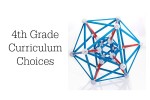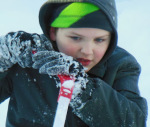Bible: The War is Over, Bible reading(Acts, Galatians, Colossians), memory work, reading missionary biographies (Imprisoned in the Golden City – Adoniram Judson ,Lights in Lisuland (Isobel Kuhn), Sundar Singh, Gospel According to TL and Daisy), OT Bible stories from Adventures in Odyssey, and listening to a dramatized reading of the OT.
History: Short studies on ancient Philistines, ancient Phoenicians, ancient Assyrians, ancient Persians, and ancient Scythians. In-depth study on ancient Greece including ancient Greece myths, the story of Troy, and Aesop’s fables. Canada A People’s History DVD series, some portions of Basic, Not Boring US History Grades 6-8 workbook
Geography: In-depth studies on Thailand and Sri Lanka. Study on Buddhism. Maps, Charts, and Graphs: United States and Its Neighbors Level E, Maps, Chart, and Graphs: United States Past and Present Level H
Math: Singapore 3B and 4A with Intensive Practice and Challenging Word Problems, Life of Fred Fractions, Xtra Math for math facts.
Science: In-depth mammal classification study and CPO Physical, Earth, and Space Science and an additional fun lab with Snap Circuits and Thames and Kosmos Physics Workshop
Logic: Logic Countdown, Logic Liftoff, Grid Perplexors B, Chess Kids curriculum
Foreign Language: Alif Baa and Arabian Sinbad for Arabic. My First Chinese Reader 1, Chinese with Mike, online tone practice for Mandarin, and Athenaze 1 for Greek
Art: Informal study with art projects on Michelangelo, Salvador Dali, and Monet
Music: Alfred Kid’s Guitar Course followed by Modern Guitar Method Grade 1, Connect the Thoughts composer study on Bach, Handel, and Mendelssohn. Informal study on the Beatles, U2, and Andrew Lloyd Webber. Music Ace Deluxe for music theory.
PE: An average of 1 hour of active (sweat-producing) play required each school day.
I’m listing language arts last since I split up the different areas of language arts. My son doesn’t fit well in a package program for language arts since he is asynchronous when it comes to language arts.
Language Arts:
Grammar: Rod and Staff 4 (Grammar only) and reading diagrams at http://www.german-latin-english.com/daily_diagrams_archives.htm
Handwriting: The Champion Method of Practical Business Writing (vintage program available online)
Vocabulary: Excavating English
Writing: Killgallon Sentence Combining for Elementary School and continue Jump In
Typing: Mavis Beacon
Literature and Reading: Reading list and read alouds designed around Figuratively Speaking.
Spelling: Finish Rod and Staff 4. Start Rod and Staff 5. Plus practice with words misspelled in Webster’s speller.






Yes, we worked from the diagram to the original sentence. Grammar wasn’t clicking with my son the previous school year so I thought I would try something different. I don’t know if it worked or not, but now he is zooming ahead in grammar.
Diagramming isn’t necessary, but if you are a visual learner or are teaching a visual learner I think it is quite valuable. It helps you see how the different parts of the sentence work.
I would never have thought about doing it backwards! Really creative!
I do like diagramming, must be the logical geek part of me 🙂
And I’m going to teach it to my girls, I don’t want them to miss out on the fun 🙂
Tress
Aha, so you work from the diagram to the original sentence.
What is the reason you are doing this? I’m still trying to figure this diagramming thing out 🙂 Nobody in the Netherlands even knows what diagramming is. I did the first two years of Analytical Grammar, so I can diagram now….but I still don’t really get the reason behind learning it.
Tress
For reading the diagrams he would look at the diagram and try to read the sentence in the correct order.
(Coming over from TWTM forum)
I really like your fourth grade plans!
What do you mean by ‘reading diagrams’? Do you let your son diagram those sentences and then compare them to the diagrams on that site?
best wishes,
Tress